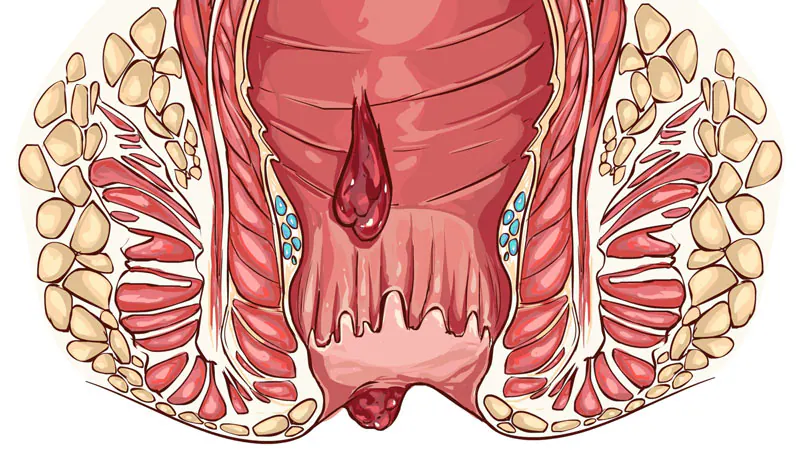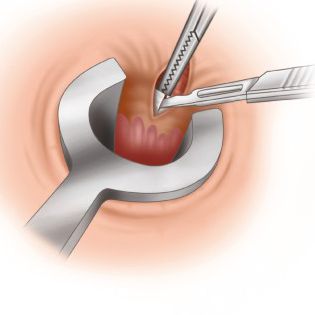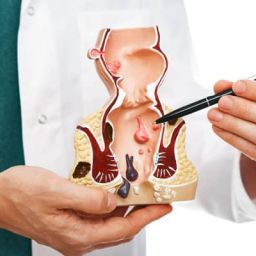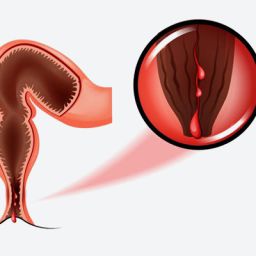
1. Key Symptoms of Anal Fissures and Hemorrhoids
While both anal fissures and hemorrhoids can cause discomfort around the anal area, their symptoms often present differently. Here’s how you can tell the difference:
Symptoms of Anal Fissures
- Sharp, Stabbing Pain: The most distinguishing feature of an anal fissure is the sharp pain that occurs during or after a bowel movement. This pain can be intense and may last for several hours.
- Visible Tear: A visible tear or crack in the skin around the anus may be present, particularly if the fissure is acute.
- Bleeding: Bright red blood may appear on the toilet paper or on the surface of the stool. This blood is usually due to the tear in the skin, not from bleeding vessels as in hemorrhoids.
- Itching or Irritation: The affected area may feel itchy or irritated, but this is not as common as pain and bleeding.
- Sphincter Spasm: Painful spasms in the anal sphincter muscle may occur, often as a result of the body’s response to the fissure.
Symptoms of Hemorrhoids

- Itching and Discomfort: One of the most common symptoms of hemorrhoids is itching or irritation around the anus, especially in external hemorrhoids.
- Bleeding: Hemorrhoids can cause bleeding during bowel movements, typically characterized by bright red blood on the toilet paper or in the toilet bowl. However, the blood is often from swollen veins rather than a tear in the skin.
- Pain: While hemorrhoids can be painful, particularly when they become thrombosed (a clot forms in the swollen vein), the pain is generally dull or aching. The pain tends to be less sharp than that of an anal fissure.
- Protrusion: In the case of external hemorrhoids, the swollen veins may protrude from the anus, becoming visible and palpable.
- Mucus Discharge: Some individuals with internal hemorrhoids may experience mucus discharge, which can contribute to irritation and discomfort.
2. Causes and Risk Factors for Anal Fissures and Hemorrhoids
Understanding the causes and risk factors for these conditions can help in identifying which one might be the cause of your symptoms.
Causes of Anal Fissures
- Constipation and Straining: Passing large or hard stools can put excessive pressure on the anal canal, leading to a tear in the skin.
- Chronic Diarrhea: Frequent bowel movements with loose stools can irritate the anal area, causing fissures.
- Childbirth: Women who have recently given birth may experience anal fissures due to the pressure exerted during delivery.
- Anal Intercourse: This can cause trauma to the delicate skin around the anus, leading to fissures.
- Inflammatory Bowel Diseases: Conditions like Crohn’s disease can cause chronic inflammation in the anal area, increasing the risk of fissures.
Causes of Hemorrhoids
- Straining During Bowel Movements: Increased pressure from straining can cause the veins around the anus to swell, leading to hemorrhoids.
- Chronic Constipation or Diarrhea: Both conditions can lead to frequent straining or irritation of the anal veins.
- Pregnancy: The increased pressure from the growing uterus can contribute to the development of hemorrhoids.
- Obesity: Excess weight can put additional pressure on the rectal veins, leading to hemorrhoids.
- Prolonged Sitting: Spending long periods sitting, especially on the toilet, can increase pressure on the anal veins, contributing to hemorrhoid formation.
- Aging: As people age, the tissue supporting the veins in the rectum can weaken, leading to hemorrhoid formation.
3. Diagnosis of Anal Fissures and Hemorrhoids
A healthcare provider can typically diagnose both anal fissures and hemorrhoids through a physical examination. In some cases, further tests may be necessary.

Diagnosis of Anal Fissures
- Visual Examination: A doctor can often diagnose an anal fissure by visually inspecting the anus. The tear may be visible, especially in acute cases.
- Digital Rectal Examination: The doctor may perform a digital rectal exam to feel for any abnormalities in the anal canal and to assess muscle tone or any signs of a sphincter spasm.
- Anoscopy: In some cases, an anoscope may be used to view the anal canal more clearly.
Diagnosis of Hemorrhoids
- Visual Examination: External hemorrhoids can be diagnosed simply by visual inspection of the anus, where swollen veins or protruding lumps may be evident.
- Digital Rectal Examination: A rectal exam allows the doctor to check for internal hemorrhoids or to feel for any lumps or swelling in the anal area.
- Anoscopy: For internal hemorrhoids, an anoscope may be used to get a better view of the rectum and check for any swollen blood vessels.
4. Treatment Options for Anal Fissures and Hemorrhoids
Both conditions are treatable, but the approaches vary depending on the specific diagnosis.
Treatment for Anal Fissures
- Conservative Treatments: For mild cases, conservative treatments such as increasing fiber intake, drinking plenty of water, and using stool softeners can help prevent further straining during bowel movements.
- Topical Medications: Topical ointments or creams, including those containing nitroglycerin or hydrocortisone, may be used to reduce pain, inflammation, and promote healing.
- Sitz Baths: Soaking the anal area in warm water several times a day can help soothe the area and relieve discomfort.
- Botox Injections: For chronic fissures, Botox may be injected into the anal sphincter to relax the muscle and reduce spasm, promoting healing.
- Surgical Intervention: In severe cases, a lateral internal sphincterotomy (LIS) may be performed to cut part of the anal sphincter muscle, reducing muscle spasm and allowing the fissure to heal.
Treatment for Hemorrhoids
- Conservative Treatments: Similar to anal fissures, increasing fiber intake and drinking plenty of water can help soften stools and reduce straining.
- Topical Medications: Over-the-counter creams, ointments, or suppositories that contain hydrocortisone, witch hazel, or other soothing agents can help reduce inflammation and pain.
- Warm Sitz Baths: For both internal and external hemorrhoids, sitting in a warm bath can provide relief from itching and pain.
- Rubber Band Ligation: For more severe cases, rubber band ligation is a minimally invasive procedure where a small band is placed around the base of an internal hemorrhoid to cut off its blood supply, causing it to shrink and fall off.
- Sclerotherapy: This involves injecting a solution into the hemorrhoid to shrink it.
- Hemorrhoidectomy: For large or prolapsed hemorrhoids that do not respond to other treatments, surgical removal may be necessary.
5. Preventing Anal Fissures and Hemorrhoids
Prevention plays a crucial role in managing both conditions. Some preventive measures include:
- Eating a High-Fiber Diet: A diet rich in fiber helps maintain regular, soft bowel movements and prevents straining.
- Drinking Plenty of Water: Staying hydrated can prevent constipation and help maintain smooth digestion.
- Avoiding Prolonged Sitting: Long periods of sitting, especially on the toilet, can increase pressure on the anal area. Try to limit sitting time and take breaks during long periods of sitting.
- Maintaining a Healthy Weight: Keeping your weight in check reduces the risk of hemorrhoids.
- Practicing Good Toilet Habits: Avoid straining during bowel movements and do not sit on the toilet for extended periods.
Although anal fissures and hemorrhoids share some similar symptoms, they are distinct conditions that require different approaches to treatment. Understanding the differences between the two can help individuals seek the appropriate care and avoid confusion when symptoms arise. If you are experiencing symptoms related to the anal area, consulting a healthcare provider is crucial for proper diagnosis and treatment. With the right care and preventive measures, both conditions can be managed effectively, allowing for relief and improved quality of life.



